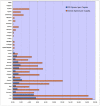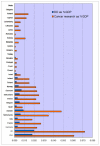The role of funding and policies on innovation in cancer drug development
- PMID: 22276026
- PMCID: PMC3234026
- DOI: 10.3332/ecancer.2010.164
The role of funding and policies on innovation in cancer drug development
Figures


























































References
-
- American Cancer Society Cancer Facts and Figures 2009.
-
- Kanavos P. The rising burden of cancer in the developing world. Annals Oncol. 2006;17(S8):viii16–23. - PubMed
-
- World Health Organisation . The Global Burden of Disease: 2004 update. WHO; 2008.
-
- Boyle P, Levin B, editors. World Cancer Report 2008. Lyon: International Agency for Research on Cancer; 2008.
LinkOut - more resources
Full Text Sources
